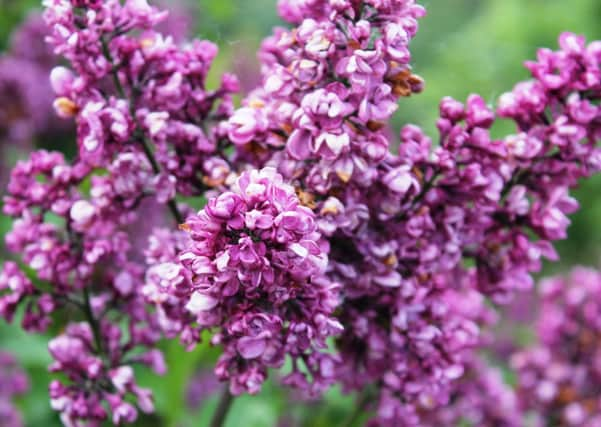In fragrant fashion


It’s been a good year for the lilacs and most have flourished, producing blooms in a variety of colours – from pure white through pink mauve to red. Last year wasn’t so good, which proves the point that lilacs flower best in alternate years. So don’t expect a repeat extravaganza in 2015.
Syringa vulgaris is actually a member of the olive family and hails originally from the Balkans where it does best on dry, rocky sites.
Advertisement
Hide AdAdvertisement
Hide AdIt took a while for it to become a popular shrub/tree in the UK, but for a time the majority of gardens sported at least one variety. They were particularly popular in Edwardian times and in towns and cities where pollution was a problem – lilacs laugh at such a thing.
But then, like many a fashion plant, the lilac fell from favour. Now, it seems to be making a bit of a comeback.
Lilacs like a sunny spot; in shade they sulk and refuse to produce those lovely flowers.
They seem able to tolerate most soils and are reasonably hardy, although a severe winter may prove fatal.
Advertisement
Hide AdAdvertisement
Hide AdLook around and you should be able to see quite a few, mature lilacs which are well past their best-by date. With some, it’s best to dig them up and move on; with others, it’s possible to give them new life by pruning.
The technique requires plenty of patience – don’t hack back and then stand back to admire your handiwork because to do the job right is a three-stage operation.
Take one-third of the bush back hard after flowering and then take the next third back in the following year – again after flowering. Finish the final third in the next year. Then you can stand back – and wait. The fourth year, the shrub may produce a flower or two, but it’s likely to be another 12 months after that before there are a serious number of blooms.
Suckers can sometimes be a problem – pull them off as soon as they appear. Likewise, deadhead when the flowers start to turn brown.
A well-established lilac can easily grow to 30ft in height, but modern varieties are far more compact and accommodating for the small garden.